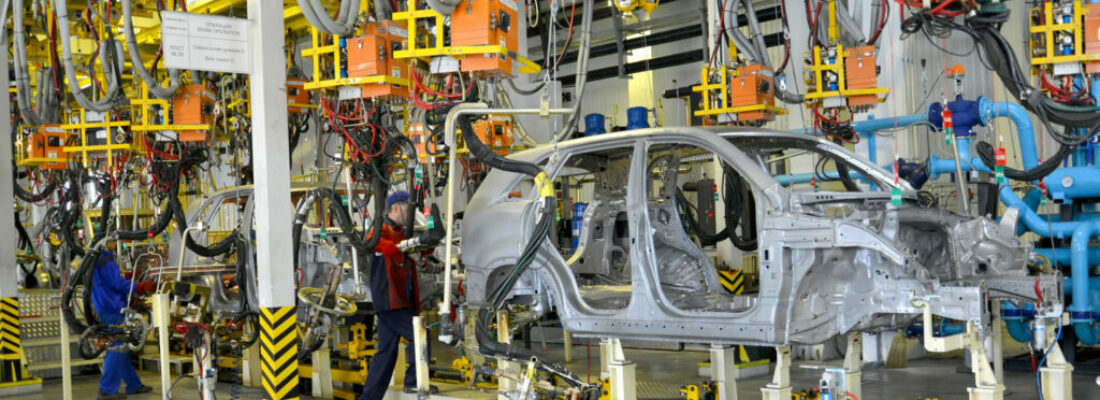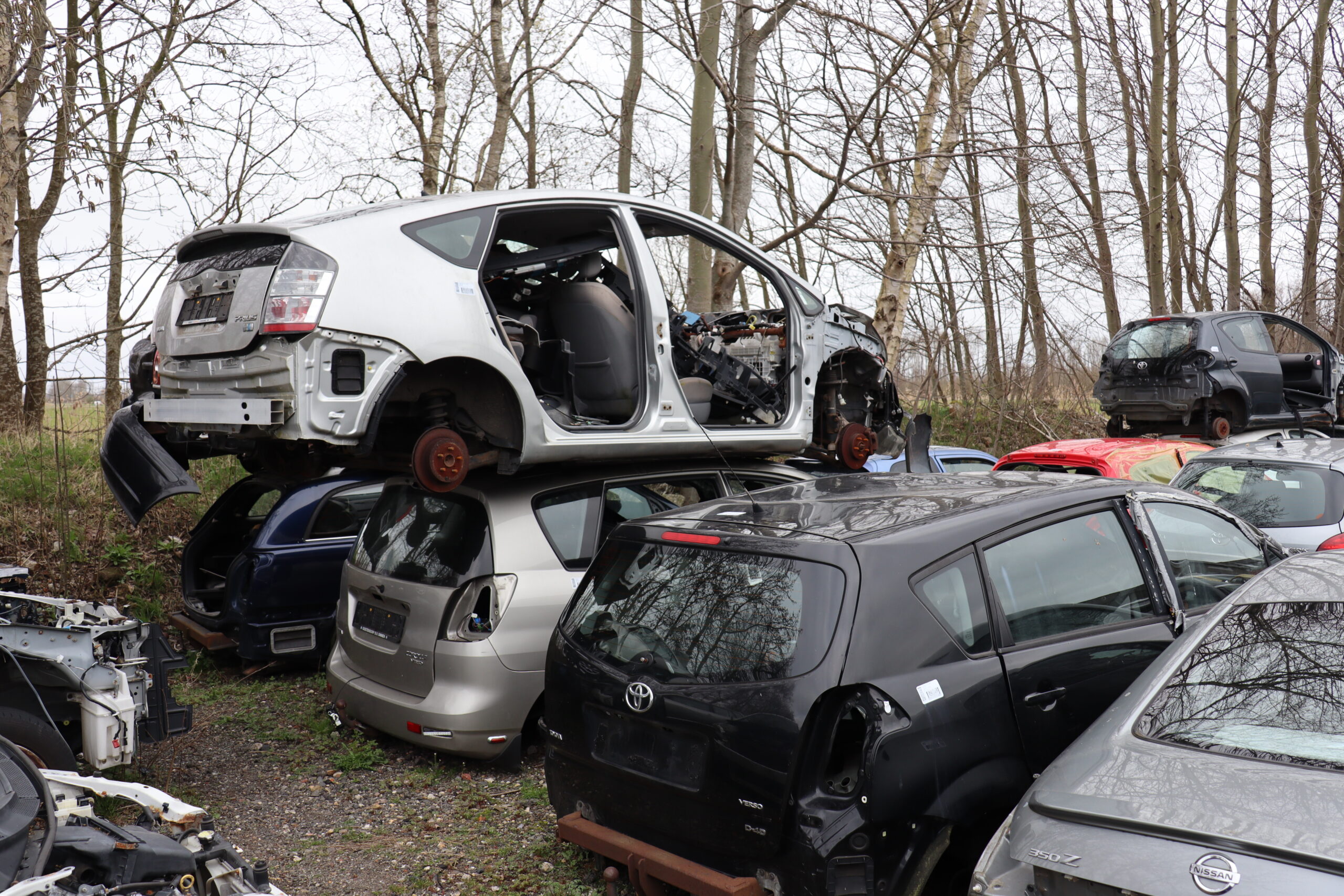Car recycling is an extremely valuable undertaking, but must naturally be done in a way that is safe for people and the environment. Yet Substances of Very High Concern (SVHC) can impede the safe recycling of waste flows. What are SVHCs and what is the current state of legislation and regulation concerning these substances?
Tekst Jens Holierhoek
According to the Netherlands National Institute for Public Health and the Environment (RIVM), Substances of Very High Concern are substances that are hazardous to people and the environment. This might be because they are carcinogenic, because they have a negative impact on fertility, or because they accumulate in the food chain. Some examples are dyes from the textile industry and heavy metals in agricultural waste flows. The list of SVHCs used by the RIVM includes an impressive 1,500 entries.
SVHCs can also be found in end-of-life cars. The substance decaBDE, for instance, is frequently found in seat coverings, printed circuit boards and a variety of plastics. This brominated flame retardant saves lives when vehicles catch fire, yet is also highly toxic. In short, it is a Substance of Very High Concern that (in excessive concentrations) is undesirable in a recycled product.
Regulatory mazeDeciding which substances should be classified as Substances of Very High Concern isn’t always so straightforward. This is because a variety of international conventions and statutory frameworks exists in connection with SVHCs. These include the REACH Directive, the OSPAR Convention, the Water Framework Directive and the POP Directive. The RIVM has also included the hazard classification (as per the European Union’s CLP Directive) in its own SVHC list. Is your head spinning yet? Try to remember REACH and POP in any case, as these are the most relevant for the car recycling industry.
According to REACH, car manufacturers must identify all chemicals they incorporate into their vehicles
REACH regulates the chemical industry in Europe. According to its provisions, for instance, car manufacturers must identify all chemicals they incorporate into their vehicles. There are exceptions, since for car parts and materials imported outside the EU, only the European SVHCs (Substances of Very High Concern) need to be reported. The REACH database provides recycling companies with an indication of the levels of SVHC that are present in vehicles. While the database is certainly an important step in the right direction, the recycling and dismantling sector remains ill-equipped to detect these substances in cars. In addition, the database does not yet apply to older vehicles – which, with an average age of eighteen years, is what most junked cars are.
The POP Directive, for its part, provides protections for people and the environment by limiting the production, trade and usage of Persistent Organic Pollutants (POPs). Flame retardant substances are one example of a POP.
Heavy metalsThe car industry is also affected by legislation concerning recycling. In the Netherlands, ARN operates within the legislative framework of the Management of End-of-Life Vehicles Decree (Bba) and the Battery Management Decree (Bbb). These decrees are aimed not only at meeting recycling targets but at another task of the automotive industry as well: preventing the use of heavy metals such as lead, mercury, hexavalent chrome and cadmium in cars. The latter two were previously used as ingredients in car paint, although this is no longer the case. Lead, however, is still found in starter batteries (and can be completely recycled). And of course, you can find all manner of substances in very old vehicles.
Maximum allowable concentrationEvery recycling company on our continent is bound by the provisions of the REACH and CLP Directives. These are items of European legislation that are directly in force in all member states. In other words, they take precedence over national laws and regulations. In addition, the CLP (Classification, Labelling and Packaging) Directive calls for the classification of substances, meaning it determines the degree to which they are potentially harmful to people or the environment (i.e. carcinogenic, toxic, etc.). Waste that contains SVHCs may be recycled into a new product only if the maximum allowable concentration of 0.1 per cent is not exceeded. In other words, the SVHC may constitute no more than one-thousandth of the total weight of the recycled material. For certain types of waste, however, the allowable limits are much stricter.
HunchesThe large quantities of Substances of Very High Concern that exist, in combination with the requisite exemptions, make it rather difficult to follow all the rules when recycling material flows. Martijn Beekman, Head of RIVM’s REACH & CLP Agency, also recognises this. He is responsible for implementing European policy on potentially harmful substances in the Netherlands. Beekman says, “You can’t expect a recycling company to examine every material flow in search of 1,500 different substances of very high concern.” In practice, tracking down SVHCs in waste flows is a matter of relying on hunches. “As a car recycling company, you know that flame retardants are present in old vehicles. Based on the information in the REACH database, you can check whether the concentration allowed by law has been exceeded and whether it’s possible to proceed with the recycling.”
RIVM: “You can’t expect a recycling company to examine every material flow in search of 1,500 different substances of very high concern”
What’s more, it is important to consider the application the recycling company has in mind for its material. “If a highly hazardous material, such as a flame retardant in a product, has been registered in the past, it’s permissible to reintroduce it into the chain as an identical product. You’re allowed to turn an old bumper into a new bumper via recycling. But if you want to make something else out of it, the substance will have to be re-registered. In that case, you’re required to demonstrate that the substance can safely be used in the new application.”
To add a further degree of difficulty, different rules (national legislation) apply to waste than those that are in effect for a recycled end product (European REACH directive). And when you import a car from outside the EU, there is no obligation to register with REACH either.
TransparencyBut REACH database or no REACH database, it remains difficult to gain a total picture of SVHCs in waste flows. Many times, information on the actual concentrations of the substances is lacking. And, as we said: we’re talking about recycling cars that are, on average, eighteen years old. “We must improve the communication back and forth between the original manufacturer and the end recycler. There are still too many gaps along the chain, making it difficult to see exactly where a particular product ends up. In some cases, the manufacturer is barely aware of what happens to their own substances down the line. That’s odd, since they’re the ones who know the most about them. Parties must be encouraged to exchange that information, so that the industry is no longer dependent on mere hunches. The parameters should be formalised in legislation and regulations, but the most important thing is to make sure that the entire chain – from manufacturer to waste manager – is in agreement” according to Beekman.
Where recycling in the automotive industry is concerned, Beekman sees no reason why the solution cannot be a simple one. “Every car manufacturer should know exactly what goes into a vehicle when it’s made. In fact, that information could be passed along down the entire chain, so that the recycling company at the end knows exactly which substances they are dealing with. It’s not all that complicated.”
DatabaseThe crucial REACH Directive has been in force for over ten years, before which time similar legislation also existed. Still, as explained, there are numerous ways in which the recycling industry’s handling of SVHCs might be greatly improved. According to Beekman, interest in reuse of materials is growing – yet this area remains insufficiently well thought out. “REACH is primarily concerned with the initial product, which hardly gets any attention at all in the waste phase. However, it’s clear that progress is already being made. Right now, the European Chemicals Agency (ECHA) is also working to set up an entirely new database that reflects the most current waste-related legislation. The information on Substances of Very High Concern is already out there, since the original manufacturers have it. The data just has to be brought together in one place; that’s the challenge here. It’s a question of working together to reorganise the relevant information.”
Dutch policyWhile the most important directives related to the recycling of SVHCs are at a European level, the Dutch government is highly active in this regard as well. In fact, tackling the issue of SVHCs is one of its priorities. That government policy has been formalised in the Activities Directive, which requires companies to prevent the release and emission of SVHCs (combat the source), or at least minimise the amounts released (minimisation). The RIVM wants to see companies examine their efforts every five years to determine if it might be possible, either via combatting the source or via minimisation, to feasibly and affordably reduce their emissions further. It promotes innovation as well.
AssistanceThe RIVM’s extensive list of 1,500 Substances of Very High Concern helps to effectively shape the Dutch policy on SVHCs. This list contains recommendations from the RIVM as to which SVHCs and waste flows should be addressed first. With its ‘Assistance in analysing the risks of SVHCs in waste materials’, published in November 2018, the RIVM is helping businesses and licensing authorities to evaluate whether the use of waste materials containing SVHC poses an unacceptable risk to people and the environment. The goal is to make waste flows in general – and those in the car recycling sector in particular – even cleaner and safer than they already are.



